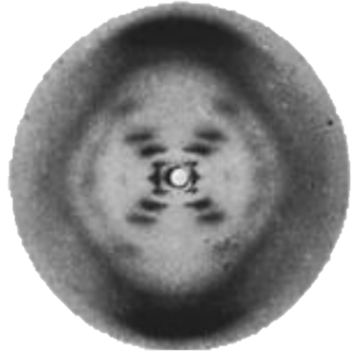一、人工智能与乳腺癌
乳腺癌已经跃升为女性发病的第一大因素,目前,标准治疗策略包括新辅助化疗、手术、术后化疗、靶向治疗、内分泌治疗和放疗。早期影像学检查无疑对乳腺癌的预后有巨大作用。
瘤不同区域内的肿瘤内异质性(即空间异质性)以及肿瘤进展的不同变化(即时间异质性),由于空间异质性,从活检或一小部分肿
作者很直接地说了人类的局限,因为的肿瘤的异质性,人类只能在不同亚型、治疗和预后总生存方面建立逻辑的解释:
Due to the heterogeneity, human interpretation without powerful computation is limited to achieve the best performance for differentiating different biological subtypes with a variety of possible treatments, predicting the response to therapy and overall survival. These noninvasive observations and predictions which are beyond traditional detection and diagnosis are important parts in the era of individualized and precision medicine.
异质性又分成肿瘤不同区域内的肿瘤内异质性(即空间异质性)以及肿瘤进展的不同变化(即时间异质性),由于空间异质性,从活检或一小部分肿瘤标本获得的病理和免疫组织化学结果可能无法代表肿瘤的整体组成。
所以要引入AI,这篇文章是对AI在乳腺癌应用的综述。回顾了人工智能在乳腺成像模式中的应用,并提出了目前的技术和临床挑战。技术方面,主要是投入时间(需要标签化,监督学习)、单中心数据(需要多中心来合作)、不可解释性。这是作者总结的三点。临床挑战:AI仅能就单一数据(如影像)训练模型,很难加其他信息(比如免疫组化、临床病理的信息)、伦理问题(数据安全、隐私,如果AI和医生出现冲突,听谁的?诸如此类)。
整体上,作者认为,首先AI的应用绝对尤其必要性的,AI的作用是处理疑难疾病,而不是为了取代医生。同时指出了未来的趋势,不光是影像,其他数据需要聚合在一起,放射组学(蛋白质组学、转录组学、基因组学、表观基因组学、代谢组学)、临床数据这些整合也需要AI的帮助。
二、Unity的扩散(或者弥散)加权磁共振成像在头颈部的应用
MR-Linac的一个亮点是治疗中的功能成像,扩散加权像是很常见的功能,主要原理是应用两个相反的磁场梯度,这两个磁场梯度使移动自旋相移,从而引起信号损失。通过使用至少两个不同的 b 值(取决于梯度时间和强度)进行测量,从而确定扩散加权和信号损失的量,可以计算表观扩散系数 (ADC),它与肿瘤细胞构成成反比。
这项研究结果显示Unity对ADC的估计,其实是有误差的,与3.0TMR相比,MR-Linac 之间的靶区和腮腺的平均 ADC 值不同,MR-Linac 低估了平均 ADC 值。
Mean ADC values differed between 93 ·10-6 mm2/s (6.4%) for target volumes and 254 ·10-6 mm2/s (24.3%) for parotid glands between diagnostic scanner and MR-Linac.
那么为什么会低估了呢? 作者提出了几种假设:
- 加权成像序列中回波时间 (TE) 的差异。研究中使用的两个 MRL 序列的 TE 比 3.0T的TE 更长,平均 ADC 值可能会根据 TE 的不同而变化。头颈部肿瘤上在空间上有不同的 T2 弛豫时间,平均 ADC 值可能会根据磁场强度而变化。A possible explanation for ADC variation might be differences in echo times (TEs) in the DW sequences. TEs of both MRL sequences used in our study were longer compared with the DŚs TE. For tissues, consisting of multiple water compartments, mean ADC values can vary depending on TE because compartments with short T2 relaxation times contribute relatively less to the measured signal for long acquisition TE. Since HNC tumors are known to have spatially varying T2 relaxation times and glandular tissues can possibly compromise small blood vessels, mean ADC values might have varied depending on the magnetic field strength。
- 图像配准的问题。 Uncertainties and errors of the mean ADC calculation caused by misregistration. All acquired DW images of both scanners were rigidly registered to the CT used for RT planning. Therefore, small errors during the registration could lead to variations in the calculated ADC value.
- 序列本身的不确定性。Another limitation of the presented study that could have affected ADC and reproducibility calculation was that both scanners used an EPI-based sequence for the acquisition of DW images. Susceptibility artifacts, caused by geometric distortions or signal loss at air-tissue boundaries, are notably prominent in the head and neck region and induce signal loss in the DW images. Furthermore, the magnetic field strength dependency of geometric distortions in DW images may cause ADC variations between the 1.5 T MRL and the 3 T DS
三、 放射生物学的第七个R
放射生物学上有著名的4R,是1975年Rodney H. Withers提出的。描述肿瘤细胞对放射线的反应的4R是:肿瘤的再增殖(Regeneration),再修复Repair (DNA damage repair efficacy)、再氧合Reoxygenation (rate of oxygen pressure in tumor tissue),、再分布Redistribution (cell cycle stage)。1989年,Steel等人通过观察不同癌细胞系对单一2 Gy分次的反应的不同陡度的生存曲线,引入了放射生物学的第五个R(固有放射敏感性)。2019年,Boustani等人将“免疫重再激活”视为放射生物学的第六个R,他们概述了抗肿瘤免疫反应如何影响肿瘤对放射的反应。这种相互作用是放射治疗与各种类型的免疫治疗(特别是免疫检查点抑制剂)相结合的基础。这篇文章引入第七个R,是肿瘤微环境的增强效应(Reinforcement by Tumor Microenvironment)
四、SBRT的经济和患者生存质量收益
SBRT对早期NSCLC与手术可媲美,这篇文章有进一步分析了对患者的经济成本和后续的生存质量对比。很显然SBRT是更好的选择:做了手术的患者生活质量指标中,身体机能、疲劳和呼吸困难评分的变化在两年内较基线有所下降。而 SBRT 的生活质量测量结果与基线相比没有变化。在经济成本方面,SBRT 的 90 天治疗相关医疗保险/医疗补助费用中位数较低为 11,188 美元,而手术则为 15,018 美元(p<0.05)。在没有严重并发症的患者中,SBRT 和手术之间的治疗相关费用相似(11,188 美元 vs 11,846 美元,p<0.05),因此可以看到,手术成本高的一个原因是因为需要对术后的并发症的处理。
Among QOL measures in the surgical cohort, the change in physical functioning, fatigue and dyspnea scores declined over the two-year period from baseline. There was no change from baseline in QOL measures with SBRT. At two-years the change in QOL measure was similar between the cohorts, except change in role functioning was significantly lower in SBRT patients. Median 90-day treatment-related Medicare/Medicaid costs were lower in SBRT $11,188 vs surgery $15,018 (p<0.05)
